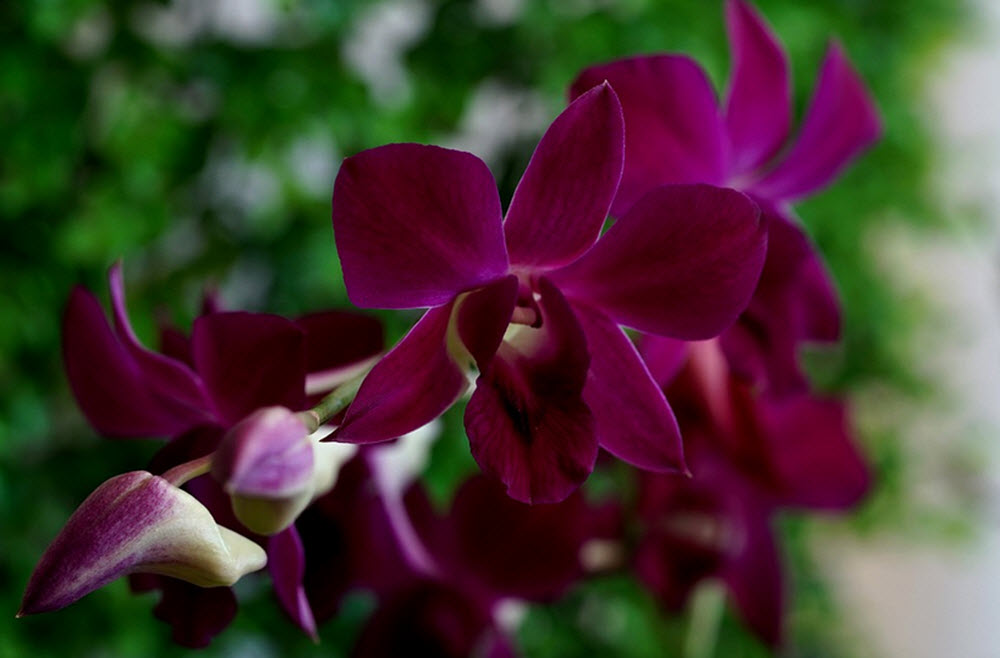With over 1 200 scientifically described species, Dendrobium is currently one of the largest orchid genera. Dendobrium orchids in floral shops often have flowers that look similar to Phalaenopsis flowers, and some stores even label the Dendrobiums ”Phalaenopsis-type orchids” even though Phalaenopsis is a different genus. If you buy true Phalaenopsis orchids, they will have green leaves year round. Dendrobium orchids on the other hand will shed their leaves each fall.

Caring for Dendrobium orchids
This is a very heterogeneous genus and it is difficult to provide any guidelines that is true for all, or even most, Dendrobium orchid species and cultivars. Wild Dendrobium orchids grow in many different parts of the world and are adapted to a variety of environments. Unsurprisingly, a Dendrobium adapted for a dry region doesn´t have the same requirements as a Dendrobium native to a humid forest, and so on. We therefore recommend that you also try to obtain more specific information regarding the species, hybrid or cultivar you wish to keep, instead of only going by the guidelines below.
Potting medium
Wild Dendrobium orchids grow attached to trees or rocks; they do not grow on the ground with their roots in the soil. Therefore, potting them in normal potting soil is a bad idea, and can easily lead to rot. You do not have to attach the orchid to a branch or a stone, but you do need to provide it with a potting medium that drains well and fast. If the pot is not small (at least 6 inches / 15 cm across), medium grade fir bark tends to work well. If the pot is smaller than this, you should mix fine bark with orchid mix. 10 parts bark to 1 part orchid mix is a good rule of thumb.
Repot your Dendrobium every other year, unless the potting medium loses its ability to drain well and quickly. Potting medium that is no longer draining properly should be replaced right away. The same is true if the medium smells bad or gets mouldy.
If there is no urgency, wait until spring to repot your Dendrobium, preferably soon after the bloom has ended.
Watering
Let the potting medium dry out well before you water again.
Nutrients
We recommend a 25-9-9 fertilizer. Dendrobium orchids benefit from a high-nitrogen fertilizer year round, but don´t overdo it. Take one teaspoon of standard fertilizer and mix it in plenty of water, and feed the orchid this water over the course of a month. Giving it just one or two big servings is not recommended.
Temperature
It is not possible to give a recommendation that is true for all Dendrobium orchids, but quite a few of the wild ones grow in environments where there is a notable difference between day temperature and night temperature. If your indoor temperature is in the 75 – 85˚ F (24 – 29˚ C) range, preferably lower it down to 60 – 65 °F (15.5 – 18˚ C) during the dark hours.
Light
Many Dendrobiums like to get a lot of direct sun in the morning and late afternoon, but will suffer if they are exposed to direct sunlight during midday (11 am to 3 pm).
If the leaves become deeply dark green, the plant probably needs more light.